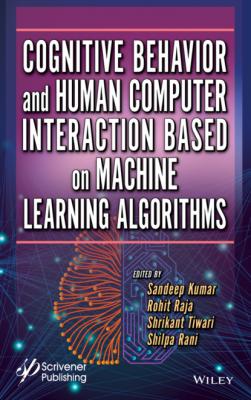Cognitive Behavior and Human Computer Interaction Based on Machine Learning Algorithms. Группа авторов
Чтение книги онлайн.
Читать онлайн книгу Cognitive Behavior and Human Computer Interaction Based on Machine Learning Algorithms - Группа авторов страница 14
 spreadsheets, and visual framework of activities.
spreadsheets, and visual framework of activities.
Understand model context
Define structural model
Realization of the model
Assessment of the model
Model implementation
1.4 Cognitive Modeling: Management Information User Interactive Device System (MIUIDS)
Today, all industry stakeholders consider the different interfaces since it provides feedback on a new product’s effectiveness in real life. However, one must not forget the adoption of interface communication from character user interface data to voice user interface information. The information is a key to the process and storage of any organization. The stakeholder, mainly customer experience, is immediate valuable feedback and product safety and low maintenance are complemented strategically designed with the necessary management user interactive device system. The essential elements of the management user interactive device system are described with the necessary diagram (Figure 1.5).
Memory
Encoding
Storage
Retrieval
In comparisons of actual with predicted performance, bars for actual performance are always wider. Comments are added to the displays to explain abnormal conditions, explain graphic depictions, reference related displays, and inform pending changes. For example, a display may show that signups may be less than three as forecasted. However, the staff member responsible for the display knows that a down payment from Peru for three aircraft is an end route and adds this information as a comment on the display. Without added comments, situations can arise, referred to as “paper tigers”, because they appear to require managerial attention though they do not. The MIDS staff believes that “transmitting data is not the same as conveying information” [8]. The displays have been created with the executives’ critical success factors in mind. Some of the measures, such as profits and aircrafts sold, are obvious. Other measures, such as employee participation in company-sponsored programs, are less obvious and reflect the MIDS staff’s efforts to understand and accommodate the executives’ information needs fully.
Figure 1.5 Basic elements of management information user interactive device system.
Figure 1.6 Model of memory, information passes through distinct stages in order for it to be stored in long-term memory.
Keys to the success of MIDS descriptions of successful systems are useful to people responsible for conceptualizing, approving, and developing similar systems. Perhaps even more critical are insights about what makes a system a success. A committed senior executive sponsor wanted a system like MIDS, committed the necessary resources, participated in its creation, and encouraged its use by others. It carefully defined system requirements. Several considerations governed the design of the system. It had to be custom-tailored to meet the information needs of its users. Ease of use, an essential item to executives who were wary of computers, was critical. Response time had to be fast. The displays had to be updated quickly and efficiently as conditions changed. They have carefully defined information requirements. There has been a continuing effort to understand management’s information requirements. Displays have been added, modified, and deleted over time. Providing information relevant to management has been of paramount importance (Figure 1.6). The staff that developed the operated and evolved MIDS combines information systems skills and functional area knowledge. The computer analysts are responsible for the system’s technical aspects, while the information analysts are responsible for providing the information needed by management. This latter responsibility demands that the information analysts know the business and maintain close contact with information sources and users [18].
The initial version of MIDS successfully addressed the company president’s most critical information needs and strengthened his support for the system. There is little doubt that developing a fully integrated system for a full complement of users would have substantial delays and less enthusiasm for the system.
Careful computer hardware and software selection is essential in this model. The decision to proceed with MIDS development was made when the right color terminals at reasonable prices became available. At that time, graphics software was very limited, and it was necessary to develop the software for MIDS in-house. MIDS development could have been postponed until hardware and software with improved performance at reduced cost appeared, but this decision would have delayed providing management with the information needed. Also affecting the hardware selection was the organization’s existing hardware and the need to integrate MIDS into the overall computing architecture. While it is believed that excellent hardware and software decisions have been made for MIDS, different circumstances at other firms may lead to different hardware and software configurations. Future plans for MIDS continues to evolve along the lines mentioned previously. Improvements in display graphics are also planned through the use of a video camera with screen digitizing capabilities. Several other enhancements are also projected. A future version of MIDS may automatically present variance reports when actual conditions deviate by more than user-defined levels. Audio output may supplement what is presented by the displays. The system may contain artificial intelligence components. There may be a large screen projection of MIDS displays with better resolution than is currently available. The overriding objective is to provide Lockheed Georgia management with the information they need to effectively and efficiently carry out their job responsibilities.
1.5 Cognitive Modeling: Environment Role With User Interactive Device Systems
Environment plays a crucial role in interacting with various kinds of interactive device systems. Behind this, there are four “E’s” that motivate the theories and assumptions